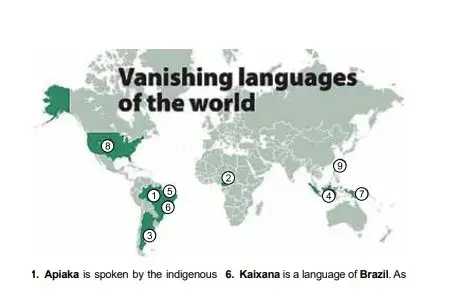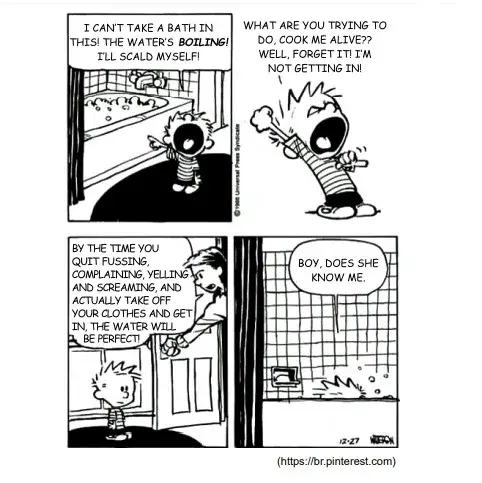Unesp 2021 - 2ª Fase: Inglês
2ª Fase - Prova de Conhecimentos Específicos
Texto Para as questões 1 a 5
1. (Unesp 2021) The text is mainly about
- the relevance of indigenous languages in South America.
- endangered tribal languages such as Paraguayan Guaraní.
- conflicts between Paraguayan Guaraní and Spanish speaking communities.
- the strength and importance of Paraguayan Guaraní for cultural identity.
- the role of tribal indigenous chiefs as leaders in Paraguay
2. (Unesp 2021) According to the text, the fact that 70% of Paraguayan population speak Guaraní makes the language
- to be likely to replace Spanish, which is the official language in Paraguay.
- absorb influences from other tribal languages like Quechua, Aymara or Mayan tongues.
- comparable to Aymara, which is also widely spoken by people of non-indigenous origin.
- stand out when compared to other native languages in Latin America, such as Quechua.
- to be pressed towards extinction by Spanish, the European colonial language in Paraguay.
3. (Unesp 2021) No trecho do segundo parágrafo “And unlike other widely spoken native tongues”, o termo sublinhado expressa
- equivalência.
- conclusão.
- contraste.
- motivação.
- preferência.
4. (Unesp 2021) De acordo com o texto, um dos motivos da popularidade da língua guarani no Paraguai deve-se
- ao isolamento geográfico do país, uma vez que se localiza no interior do continente, sem saída para o mar.
- à dificuldade que a população indígena tinha para aprender o espanhol, uma vez que as duas línguas são muito diferentes.
- à decisão da elite de colonizadores espanhóis em aprender o guarani para melhor controlar seus empregados.
- à tentativa bem-sucedida da realeza imperial espanhola de querer impor sua língua e religião às colônias.
- à facilidade de aprendizagem da língua por conta de sua estrutura simples e vocabulário reduzido.
5. (Unesp 2021) The excerpt from the third paragraph “But while it remains under pressure from Spanish, Paraguayan Guaraní is itself part of the threat looming over the country’s other indigenous languages” means that Paraguayan Guaraní
- is part of a complex web of indigenous languages equally spoken in 19 multilingual tribal communities in Latin America.
- might eventually disappear along with minor indigenous languages in favour of the Spanish language.
- should become more widespread than Spanish in the southern region of Latin America.
- exerts pressure on speakers of other indigenous languages, who may end up abandoning their native language to speak Guaraní.
- might acquire influences of Spanish and other languages and substantially change over time.
6. (Unesp 2021) Leia o texto e examine o mapa.
The UN Atlas of Endangered Languages lists 18 languages with only one remaining speaker in 2010. With about one language disappearing every two weeks, some of these have probably already died off.

1. Apiaka is spoken by the indigenous people of the same name who live in the northern state of Mato Grosso in Brazil. The critically endangered language belongs to the Tupi language family. As of 2007, there was one remaining speaker.
2. Bikya is spoken in the North-West Region of Cameroon, in western Africa. The last record of a speaker was in 1986, meaning the language could now be extinct.
3. Chana is spoken in Parana, the capital Argentina’s province of Entre Rios. As of 2008, there was only one speaker.
4. Dampal is spoken in Indonesia, near Bangkir. Unesco reported that there was one speaker as of 2000.
5. Diahoi is spoken in Brazil. Those who speak it live on the indigenous lands Diahui, Middle Madeira river, Southern Amazonas State, Municipality of Humaita. As of 2006, there was one speaker left.
6. Kaixana is a language of Brazil. As of 2008, the sole remaining speaker was believed to be 78-year-old Raimundo Avelino, who lives in Limoeiro in the Japura municipality in the state of Amazonas.
7. Laua is spoken in the Central Province of Papua New Guinea. It is part of the Mailuan language group and is nearly extinct, with one speaker documented in 2000.
8. Patwin is a Native American language spoken in the western US. Descendants live outside San Francisco in Cortina and Colusa, California. There was one fluent speaker documented as of 1997.
9. Pazeh is spoken by Taiwan’s indigenous tribe of the same name. Mrs. Pan Jin Yu, 95, was the sole known speaker as of 2008.
De acordo com o texto e o mapa
- dezoito línguas foram consideradas extintas por não haver registros de falantes vivos.
- as línguas ameaçadas de desaparecimento serão recuperadas pela ONU por meio de registros e gravações.
- as nove línguas identificadas já desapareceram há três décadas.
- as populações indígenas deixam de usar a sua língua nativa quando migram para centros urbanos.
- o país que concentra a maioria das nove línguas em extinção é o Brasil, predominantemente localizadas em sua região Norte.
7. (Unesp 2021) Leia a tira “Calvin e Haroldo”, de Bill Watterson

No último quadrinho, a fala de Calvin revela que ele
- ficou com medo da irritação da sua mãe.
- achou que a água continuava quente demais.
- não quis mais sair do banho.
- admitiu que a mãe estava certa.
- entrou na banheira contra a sua vontade.
8. (Unesp 2021) Leia a tira

A expressão “laugh your head off” equivale, em português, a
- sorrir amarelo.
- morrer de rir.
- contar uma piada.
- perder a cabeça.
- ficar feliz da vida.